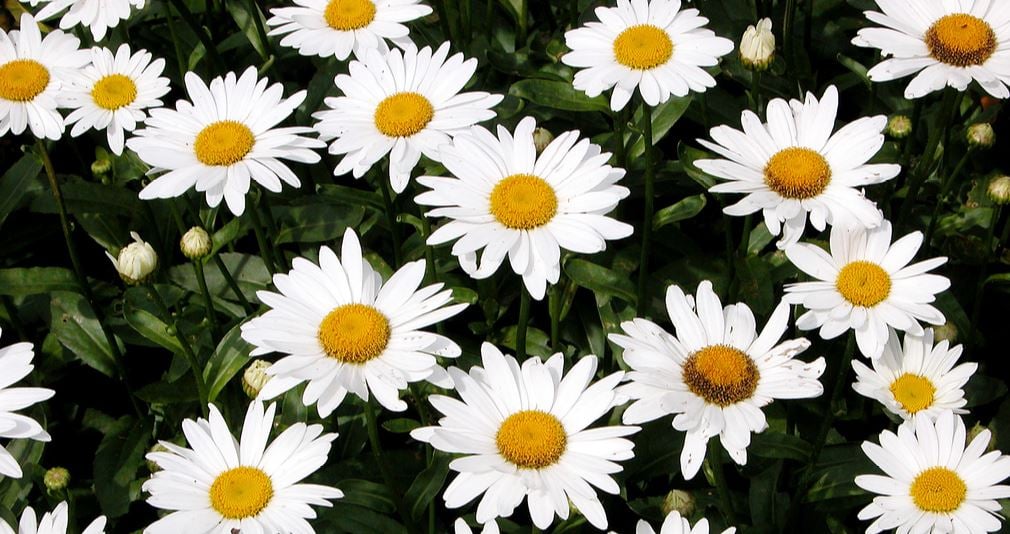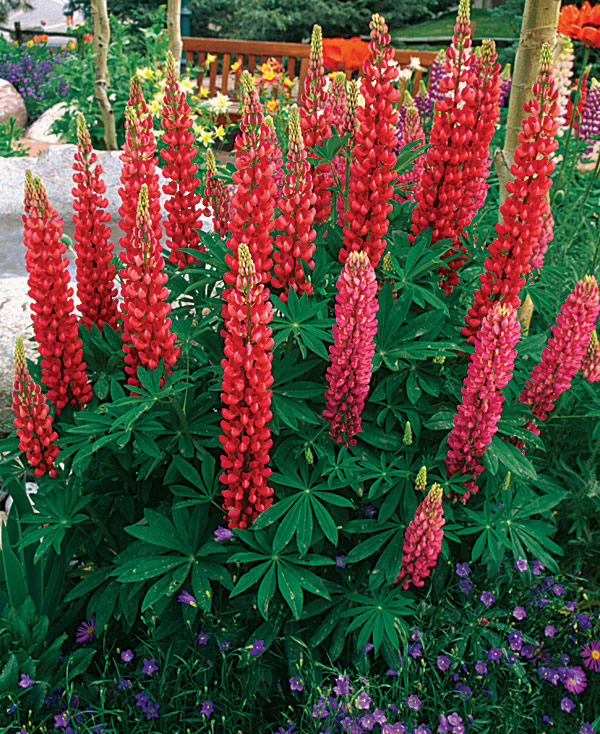To grow perennials from seeds, start by sowing them in well-draining soil and keeping them consistently moist. Provide adequate sunlight and temperature conditions for germination and growth.
If you want to add color and longevity to your garden or landscape, growing perennials from seed is a cost-effective and satisfying option. Perennials are plants that live for two or more years, and they offer beauty and variety year after year.
While purchasing established perennials is a common practice, growing them from seed allows for a wider selection and can be a rewarding experience. By following a few simple steps, you can successfully grow perennials from seed and enjoy their vibrant blooms for many seasons to come. We will provide a step-by-step guide on how to grow perennials from seed, so you can enhance your garden with these long-lasting and resilient plants.

Credit: www.gardeners.com
How to Grow Perennials from Seed: Step by Step Guide
Choosing The Right Perennial Seeds
|
When it comes to growing perennials from seed, it is important to choose the right seeds that will thrive in your garden. There are several factors to consider when selecting perennial seeds:
There are various types of perennial seeds available in the market, including:
When selecting perennial seeds, keep these tips in mind:
|
Preparing The Soil
Before planting perennials from seed, it is crucial to properly prepare the soil to create optimal conditions for growth. Preparing the soil is essential as it provides the necessary nutrients, moisture retention, and drainage for successful seed germination and establishment of healthy plants.
- Improves soil structure: Preparing the soil loosens compacted soil and enhances its ability to hold moisture and nutrients, allowing roots to grow freely.
- Enhances nutrient availability: Adding organic matter or compost to the soil increases its fertility, providing essential nutrients for plant growth.
- Improves drainage: Properly prepared soil allows excess water to drain effectively, preventing waterlogged conditions that can lead to root rot.
- Reduces weed competition: Clearing the planting area of weeds before sowing seeds helps prevent competition for resources.
- Remove any existing grass, weeds, rocks, or debris from the planting area.
- Aerate the soil using a garden fork or tiller to loosen compacted soil.
- Add organic matter or compost to improve soil fertility and structure.
- Mix in any necessary soil amendments based on a soil test analysis.
- Rake the soil to create a smooth and level surface for planting.
Germination Techniques
Perennial seeds can be grown from seed, and understanding the different germination methods can help ensure success.
Stratification is a process that mimics the natural conditions required for seed germination. It involves subjecting the seeds to cold, moist conditions for a specific period of time. This process helps break the seed’s dormancy and jump-starts germination. By stratifying perennial seeds, you can improve germination rates and overall plant vigor.
Sowing Directly in the Ground vs. Starting Indoors
When it comes to sowing perennial seeds, you have two options: sowing them directly in the ground or starting them indoors. Direct sowing is a simpler method that involves planting seeds directly in the garden bed. However, some perennial seeds require special care and attention, and starting them indoors can provide more controlled conditions. Indoor sowing allows you to control temperature, moisture, and light, which can enhance germination success. Starting seeds indoors also gives you a head start on the growing season, as you can transplant the seedlings outdoors once the weather is favorable.
Proper Seed Planting And Care
- Choose a location with well-draining soil and adequate sunlight for your perennial seeds to thrive.
- Prepare the soil by removing any weeds or debris and loosening it with a garden fork.
- Sow the seeds according to the package instructions, making sure they are evenly spaced.
- Lightly cover the seeds with a thin layer of soil or vermiculite.
- Water the newly planted seeds gently, ensuring the soil remains moist but not waterlogged.
- Provide sufficient sunlight for the seeds to germinate, aiming for 6-8 hours of direct sunlight daily.
- Monitor the moisture levels and water as needed, keeping the soil consistently moist throughout the germination period.
- Inspect the plants regularly for any signs of pests or diseases.
- Use organic pest control methods or consult a gardening expert if necessary to prevent damage.
By following these guidelines, you can successfully grow beautiful perennials from seeds, enhancing the beauty of your garden.
Transplanting Perennial Seedlings
Transplanting perennial seedlings is an essential step in the process of growing perennials from seed. Knowing when to transplant the seedlings into the garden is crucial for their successful growth and development. Here are the necessary steps to ensure a successful transplant:
- Wait until the seedlings have developed a strong root system and have at least two sets of true leaves before transplanting.
- Choose a suitable location in the garden that receives adequate sunlight and has well-draining soil.
- Prepare the planting area by removing any weeds or grass and loosening the soil.
- Dig holes slightly larger than the root ball of the seedling and space them according to the specific perennial’s requirements.
- Gently remove the seedlings from their containers, being careful not to damage the roots.
- Place each seedling in a hole, ensuring that the top of the root ball is level with the surrounding soil.
- Backfill the holes with soil, firming it gently around the seedlings.
- Water the transplanted seedlings thoroughly, keeping the soil evenly moist but not waterlogged.
After transplanting, it is important to provide proper watering and aftercare to promote the seedlings’ establishment in the garden. Monitor the soil moisture regularly and water as needed to keep the roots hydrated. Apply a layer of mulch around the seedlings to conserve moisture and suppress weed growth. Finally, observe the growth of the transplanted perennials and provide any necessary support or pruning as they continue to develop.
Maintaining Healthy Perennial Plants
Regular watering and fertilizing practices are essential for maintaining healthy perennial plants. Perennials need consistent moisture to establish strong root systems and thrive. Water deeply and ensure the soil is evenly moist, especially during dry spells. Applying a layer of mulch around the plants helps retain moisture and reduces weed growth.
Fertilizing perennials should be done in early spring, providing them with the necessary nutrients for continuous growth. Use a balanced fertilizer or a slow-release fertilizer specifically formulated for perennials. Follow the recommended application rates to avoid overfertilization, which can lead to excessive foliage growth at the expense of flowering.
Pruning and deadheading techniques are crucial for maintaining the shape and promoting new blooms in perennial plants. Deadheading, or removing spent flowers, prevents the plant from putting energy into seed production and encourages continuous blooming. Cut back any damaged or diseased stems to promote overall plant health.
Overwintering perennials requires some preparation to protect the plants from winter damage. Apply a layer of mulch or straw around the base of the plants to insulate the roots. Cut back any dead foliage to reduce the risk of disease or pests overwintering on the plant. Consider covering vulnerable perennials with frost cloth or burlap for added protection.
Harvesting And Saving Perennial Seeds
Harvesting and saving perennial seeds is an essential step in growing perennials from seed. To ensure successful seed collection, it is crucial to recognize the signs of seed maturity in perennials. Look for seeds that have changed color and developed a hard outer layer. Proper harvesting techniques are also important for seed viability, such as collecting seeds on dry days and avoiding moisture and mold.
Once harvested, it is essential to store and label the saved seeds in a proper manner. Seeds should be stored in cool, dry places in labeled containers to ensure easy identification and prevent mixing of different varieties. By following these steps, you can successfully harvest and save perennial seeds, enabling you to grow a variety of plants in your garden for years to come.
Example: In a dandelion, the seeds turn from green to white and become fluffy when they are mature.
Example: Use small envelopes or glass jars with a label indicating the plant species, date, and any other relevant information.
Troubleshooting Common Seedling Issues
In this blog post, we will discuss common seedling problems that can arise while trying to grow perennials from seed, and how to troubleshoot them effectively.
1. Dealing with damping-off disease: Damping-off is a fungal disease that causes seedlings to rot at the base and eventually collapse. To prevent damping-off, ensure proper airflow and drainage by providing adequate spacing between seedlings and using well-draining soil. Additionally, apply a fungicide treatment to the soil before sowing the seeds.
2. Handling root rot and nutrient deficiencies: Root rot can occur due to overwatering or poorly drained soil, leading to stunted growth and yellowing leaves. To address root rot, provide well-draining soil and adjust watering practices accordingly. Nutrient deficiencies can be tackled by using a balanced fertilizer or organic amendments to provide essential elements needed for healthy seedling growth.
Frequently Asked Questions On How To Grow Perennials From Seed
What Is The Best Time To Plant Perennial Seeds?
Plant perennial seeds in early spring, after the last frost, or in late fall, before the ground freezes.
What Perennial Seeds Are Easy To Start?
Easy-to-start perennial seeds include sunflowers, marigolds, zinnias, cosmos, and black-eyed Susans. These seeds require minimal effort and can be grown by beginners with success.
Will Perennial Seeds Bloom The First Year?
Perennial seeds usually take longer to bloom, often not flowering until the second year or later. Their focus in the first year is on growing strong roots, which will support future blooms. Be patient and provide proper care to encourage blooming in subsequent years.
Can You Start Perennials From Seed In Summer?
Yes, you can start perennials from seed in summer.
Conclusion
Growing perennials from seed is an affordable and rewarding way to enhance your garden. By following the proper techniques and understanding the unique needs of each plant, you can successfully cultivate a stunning array of perennials. From providing the ideal growing conditions to nurturing the seedlings, your efforts will be rewarded with beautiful, long-lasting blooms year after year.
So, don’t hesitate to explore the world of perennial seed growing and create a vibrant and sustainable garden that will thrive for many seasons to come.

